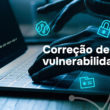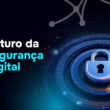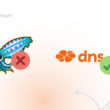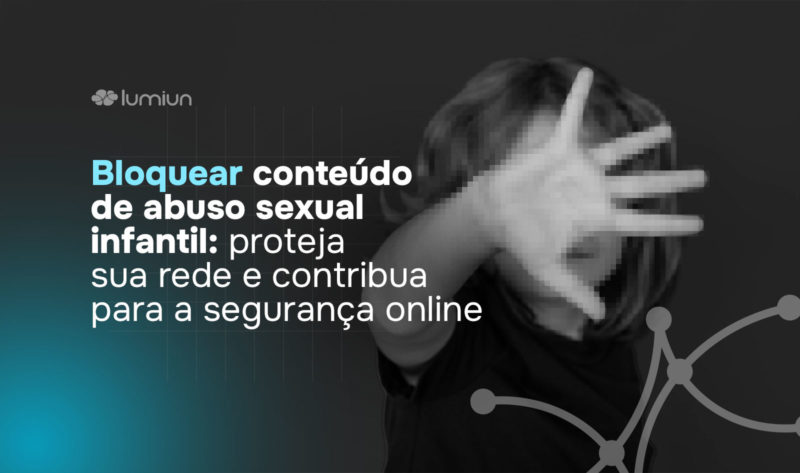The internet was one of the greatest inventions of humanity and has been revolutionizing the way we connect and access the information. However, this same tool that connects us also exposes its users to serious dangers, such as online children's sexual abuse. The presence of this illicit content in the network threatens not only to victims, but the whole society, demanding urgent actions to a safer virtual environment.
Network protection against child sexual abuse requires more than technical solutions. It is essential to establish rigorous ethical and social standards to prevent the spread of this criminal material. By fighting the perpetuation of this crime, we contribute to a safer online environment for all. The growth of digital platforms has increased the urgency of implementing effective tools to block access and circulation of this type of content. Fortunately, initiatives such as the Arachnid project has been working collaboratively to identify and remove this type of material.
The importance of blocking content of child sexual abuse
The content of child sexual abuse on the Internet causes irreparable damage to victims and society. The dissemination of this criminal material perpetuates the abuse to each view, re-traumatizing the victims and violating their privacy and dignity. In addition, the production and distribution of this type of content feeds a profitable and extremely dangerous criminal industry.
The Watch Foundation Internet (IWF) reported through its studies that by 2023 there was a 25% increase in detecting URLs containing child sexual abuse material , highlighting the importance of combating this problem. IWF highlighted the finding of 275,652 URLs confirmed as containing images of child sexual abuse. Only in the last year, an alarming indicative of the dissemination of this material.
Thus, the institution also reported that in 2023, there was an increase of 1000% in the dissemination of child sexual abuse material with primary children, presenting ages between 7 and 10 years . The initiative blocked more than one million web pages (1,069,488), which contained at least one, and often tens, hundreds or thousands of images and videos of child sexual abuse.
Although the study shows that the place with the highest incidence of hosting child pornographic material is southern Asia, the Childlight notes that these data can be presented distorted, as these criminal users use resources that hide their real location.
In addition to causing irreparable psychological and emotional damage to victims, access and dissemination of child sexual abuse material constitute a serious crime, punished by legislation in several countries. That is, blocking this type of content is therefore an ethical and legal obligation.
By restricting access to this type of material, companies and institutions that provide internet services contribute to the creation of a safer digital environment, a place where users can sail without the risk of facing illegal and traumatic content.
Legal and social consequences
The dissemination of child sexual abuse content is a very serious violation of human rights and is subject to various legal penalties. Thus, in many countries, the legislation provides for prison penalties to those who store, distribute or even access this type of content. In addition to the significant impact on the reputation of platforms that do not actively act to prevent this dissemination. According to Brazilian legislation, it is a crime to “production, reproduction, direction, photography, filming or registration, by any means, of an explicit sex scene or pornography involving children or adolescents”, categorizing as a heinous crime, with imprisonment of 4 to 8 years and fine.
Technology companies that fail to implement effective mechanisms for detecting and blocking illicit content can also face legal proceedings and their damages. Many companies end up suffering the loss of confidence LGPD penalties .
Thus, the tuition of child sexual abuse material on the Internet generates a negative impact throughout society. In creating an environment of impunity, it encourages the perpetuation of these crimes and causes irreparable psychological damage to the victims, further aggravating the suffering caused by initial violence.
Digital responsibility
We understand the concept of digital responsibility as the duty that individuals, companies and governments have to ensure that the use of technology and its resources is safe, ethical and in accordance with current legislation. In the case of blocking the content of child sexual abuse, this responsibility is an even more critical factor.
For technology companies and internet service providers, the implementation of solutions that block the dissemination of this material is a priority. It is necessary to invest in cutting -edge technologies such as content filters and real -time monitoring systems to quickly detect and block illegal content.
Governments should lead the creation of solid public policies to combat online children's sexual abuse. This initiative requires international cooperation between regulatory agencies, technology companies and civil society organizations. That is, by establishing a legal framework and encouraging collaboration between the different sectors, governments contribute to a safer virtual environment. Thus, the active participation of users, denouncing suspicious content, is fundamental to complement these actions.
Arachnid Project
Arachnid Project is one of the main global initiatives to combat child sexual abuse content. The project was launched by Canadian Center for Child Protection , being an automated detection tool that searches the internet for children's abuse images and videos.
With the help of advanced technologies such as Machine Learning , the project can identify and signal suspicious content in real time. Since its launch, the system has removed millions of illegal from the internet, representing a major advance in combating the spread of this material.
In addition to acting proactively, the Arachnid project also works in partnership with organizations and internet service providers to ensure that its lock lists are always up to date to ensure that users are protected against access to child sexual abuse content.
Arachnid Project in partnership with Lumiun DNS
The partnership between the Arachnid and Lumiun DNS project demonstrates the effectiveness of technological solutions to combat online children's sexual abuse. This collaboration helps block access to harmful content and protect children and adolescents on the internet. Together, these projects deliver concrete results and contribute to a safer virtual environment for all.
Lumiun Lumiun DNS , is a content filtering solution, uses the lock lists provided by the Arachnid project to prevent users from accessing sites that contain children's sexual abuse material. This intense collaboration allows companies to implement an extra safety layer on their networks, ensuring not only illegal content are blocked, but users are protected against other digital threats such as phishing and malware .
Lumiun Lumiun DNS also offers updates ensuring that new threats are quickly identified and neutralized before they cause real problems. This feature is particularly important in a scenario where illicit content is constantly moved and redistributed.
How does illegal content block on the Internet works
Thus, illegal content blockage, such as child sexual abuse, is done through blocking lists that contain URLs , domains and IPs that are associated with illicit materials. These lists receive constant updates with the support of organizations such as the Arachnid Project, IWF and other entities that fight online crime.
DNS -based filtering technologies use these lists to prevent users from accessing pages that contain illegal content.
That is, these updates are essential, as criminals often change or change the addresses of the pages that host illegal content to avoid their block. Advanced filtering tools and artificial intelligence are indispensable resources in this process, ensuring that networks are always protected. Finally, content filtering can be adjusted to adapt to each company's policies by offering a personalized protection layer that meets the specific needs of each business.
Benefits of Automatic Blocking of Sensitive Content
Automatic lock of sensitive content is a feature that brings numerous benefits to network safety. This automatic lock not only prevents access to illegal material, but also protects users from threats such as phishing , malware and other types of cyber attacks.
Its proactive protection is one of its greatest benefits, preventing users from accessing hazardous or potentially traumatizing content. Automatic block also ensures compliance with legal regulations, so that your company will be protected against fines and sanctions that are imposed by regulatory agencies.
Automatic filters simplify network management, allowing administrators to control access to inappropriate content. By automatically blocking harmful materials, companies promote a safer and more productive work environment, contributing to the well-being of employees. This technological solution is effective, easy to implement and with a positive impact on users' information and mental health.
How to implement effective measures to block content of child sexual abuse
The implementation of effective measures for blocking child abuse content involves a combination of technologies, internal policies and good practices. content filtering solutions such as Lumiun DNS , which blocks access to illegal . This type of solution uses lists constantly updated by organizations such as the Arachnid Project to ensure that known websites are blocked immediately.
Implementation of continuous monitoring systems is another important aspect in your strategy. Illicit sites often change address to avoid blockages, making it essential to use tools that monitor the network and update their lock lists.
In addition to technological tools, the implementation of a clear and well -consolidated internal policy about the use of the internet is critical. Companies and institutions must establish internal rules to guide their employees and users about what is considered acceptable behavior in the network and what are the consequences of attempts to access content considered illegal .
We need to understand that the implementation of these policies must be accompanied by an employee awareness and training program
Collaboration with external partners is also very valuable. Collaboration with internet providers, child protection organizations and public security can facilitate rapid blockage of illicit content and allow incidents to be reported and treated with the necessary urgency.
What tools are available on the market?
There are several tools available on the market to block illicit content, such as security software, filtered DNS artificial intelligence -based solutions . Lumiun Lumiun DNS , for example, is a tool that operates in the DNS layer to block access to websites containing improper or illegal content. In addition, this feature has constant updates and integration with global communities , such as those provided by the Arachnid project.
Openndns and Safedns are also widely used by companies and educational institutions to protect their users against harmful content. That is, these solutions, as the name implies, block specific website categories, but do not offer all the customizable features that companies need.
In addition to DNS solutions, there are also specialized software that monitor real -time network traffic, being able to identify and block forbidden content. This type of technology can be integrated with network management systems and offer detailed reports and alerts in cases of access attempts.
For companies or organizations that need an extra level of protection , it is necessary to rely on tools that use artificial intelligence to automatically detect new illicit content, without the need for user intervention. Thus, these systems analyze the content of websites in real time and recognize patterns of abusive material.
Solutions such as Lumiun DNS can be integrated with major security features such as Mikrotik, PFSense® intrusion detection systems endpoint solutions to provide a defense in online threat layers. This integration allows different parts of the security system to work together to detect and block threats.
In addition, integration with the network traffic analysis system allows the creation of automatic alerts in the face of suspicious behaviors, such as repeated attempts to access locked websites. Thus, this type of warning will help security teams respond quickly to possibilities and adopt preventive measures.
Practical examples of use
A practical example of using content blocking tools can be noticed in educational institutions filtrate DNS systems to protect their students. Schools and universities have been implementing solutions such as Lumiun DNS to prevent access to sites with content of child sexual abuse, violence or other inappropriate materials.
Thus, large companies have adopted these solutions to protect their employees and avoid productivity and cyber security . Blocking websites that contain malware or illicit content is a key measure to avoid systems and network infections, as well as combating data leakage.
Internet service providers have also been adopting this type of solution to strengthen their infrastructure by offering their customers the guarantee of safe navigation . Governments have implemented public policies that encourage the use of content blocking tools to prevent the dissemination of illegal online materials.
Challenges in detecting and blocking illicit content
Detection and blocking illicit content in the digital environment face constant challenges. The frequent change of cybercriminals addresses and domains hosting child sexual abuse material makes monitoring and filtering much more difficult. To overcome this barrier, we must develop increasingly sophisticated and intelligent tools that can identify and block this content proactively.
Thus, the use of advanced encryption and virtual private networks (VPNs) is another significant challenge. That is, this practice makes it more difficult for monitoring tools to identify illegal traffic, requiring more robust and intelligent solutions.
In addition, many of the platforms used to share this type of content are decentralized and operate on the Dark Web , damaging their tracking and blocking. Traditional security solutions cannot always access and monitor these networks by creating a gap in digital protection.
The lack of international collaboration is another problem in this combat. Although there are numerous initiatives, such as the Arachnid project , global coordination between countries is still very poor. public safety agencies must work together to ensure faster and more effective action against the dissemination of illicit content.
Filter with lock in one click
The lock tool that needs only one click for its configuration offers a practical and accessible solution to users who want to protect their networks against illegal and threats present in the digital environment. In addition, these tools allow network administrators to configure locks easily and quickly without requiring advanced technical knowledge.
What kind of tool is Lumiun DNS ? Your interface allows administrators to choose content categories to be blocked with a single click. These categories include child pornography, gambling, violence and even misuse . With its ease of use, this tool is important in corporate and educational environments, allowing you to manage safety even with reduced teams and limited resources.
In addition to being a simple -use tool, a click lock offers flexibility, allowing administrators to adjust their lock settings according to your organization's needs. For example, a company can block game sites during working hours, but can release this access at rest schedules.
Its functionality also integrates well with broader safety systems, allowing centralized and efficient management of the safety of your network. In addition, this significantly reduces time and effort to keep the network protected and in accordance with current policies.
The contribution of companies and organizations for digital security
Companies and organizations play an important role in promoting digital security by adopting measures that protect your network and your users. Investing in content blocking tools and collaborating with initiatives such as Arachnid project allows companies to prevent the spread of child sexual abuse and other forms of illegal content.
In addition, several innovative digital safety solutions are under development that are strengthened by artificial intelligence . These tools improve the detection of illicit content and increase the effectiveness of blockages, reducing response time for the removal of prohibited materials.
Thus, it is possible for organizations to contribute to digital security through a culture of awareness and responsibility among its users and employees. For this, the implementation of training on the safe use of the internet and the importance of denouncing suspicious content is a very recommended strategy. Companies and organizations can also collaborate with public security to create public policies that promote digital security. This collaboration is essential to ensure that the digital environment remains a safe space for everyone.
Global initiatives
Several global initiatives are underway to combat the dissemination of child sexual abuse on the Internet. Organizations such as Arachnid Project and Watch Foundation Internet (IWF) have been working tirelessly to identify and remove this type of content from digital platforms. These initiatives collaborate with governments and internet providers to improve strategies and ensure that they block prohibited content as efficiently as possible.
International bodies such as Interpol and Europol have been working to facilitate cooperation between countries in the fight against digital crimes, including the dissemination of child sexual abuse material. This is possible through information sharing and coordinating efforts that help identify and arrest the criminals who operate on the internet.
Governments around the world have shown a lot of initiative in implementing legislation , in order to force technology companies to remove and block illegal content. These new laws help create a safer environment and increase companies' responsibility to reduce the circulation of harmful materials.
Internal digital security policies
Internal digital security policies are essential resources to ensure that companies or institutions are prepared to face cyber threats and protect their users from illicit content. These policies include internet use guidelines, information storage, and security measures such as content blocking and malware .
Thus, to create an effective internal policy, the company or institution must analyze in detail the risks to which it is exposed. With this, we can identify the content categories we must block and the safety tools we can use to achieve this goal, informing each employee about their responsibility in the digital protection process.
A complete information security policy includes a well -defined incident response plan. With clear data leakage procedures and unauthorized access, companies guarantee quick and effective answers, minimizing damage and protecting their digital assets. In addition, a trained and prepared team is critical to dealing with these situations efficiently.
It is important to remember that the periodic review of internal policies is indispensable. Cyber threats evolve daily, and digital security policies should follow this evolution, aligning with current best practices and technologies.
The importance of acting proactively
A proactive approach to blocking illicit content on the Internet is a responsibility that should be shared by companies, governments and users . Blocking child sexual abuse material is critical to protecting victims and ensuring that the internet remains a safe space for everyone.
Digital safety solutions such as Lumiun DNS and monitoring tools help avoid the dissemination of illegal content by minimizing the risk of accidental exposure. That is, the collaboration between different sectors is indispensable and crucial to facing this global problem more effectively.
Initiatives such as Arachnid project and partnerships with digital security companies show that it is possible to reduce the dissemination of illegal content through advanced technologies and cooperation.
In short, proactivity in implementing content blocking is a vital step in creating a safer and more protected digital environment. Digital security investment goes beyond legal compliance, is an ethical commitment to the safety and well-being of all.











